Health research based on innovative materials
Interdisciplinary by nature
René Rossi, Co-Head of Empa's Materials meet Life department and the Research Focus Area Health, explains in an interview what is special about research in the health sector at Empa, what this has to do with materials and which topics Empa's research will be tackling.
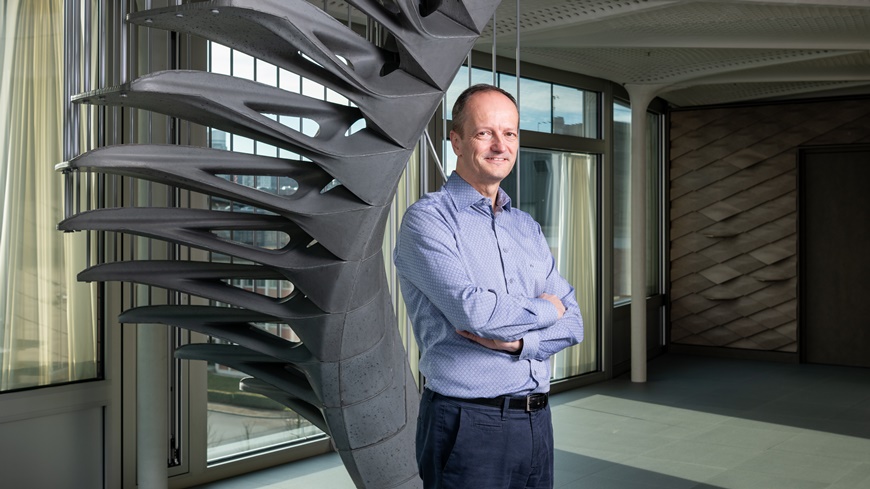
Why does a materials science institute like Empa actually conduct biomedical research?
According to an EU study, around 70% of all innovations are materials-driven. There are thus numerous important fields of application for new materials, including the healthcare sector and the life sciences. Take an implant, for example: It should last as long as possible, infections should be avoided, and the surface properties should ensure a solid integration into the bone tissue, for instance in an artificial hip – all highly complex topics that require an enormous amount of knowhow in materials science.
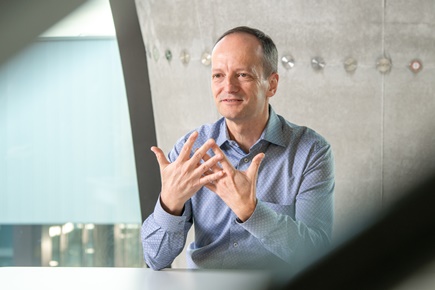
What characterizes Empa projects in this area – what is special about them?
When working with our clinical partners, we often see a push-pull process that is triggered by an intensive dialog. The most successful projects are those that arise directly in the clinical environment in a direct exchange with our hospital partners. We demonstrate the technological possibilities of new materials, and our partners tell us about their pain points in everyday clinical practice. Although they know exactly where they face problems, they often don't know that there might already be solutions for some of them. These intensive interactions are absolutely crucial – and you have to take your time to build trust and mutual understanding. Even for us, that was a learning process at the beginning.
Moreover, many of our partnerships, particularly in the clinical area, are long-term. This allows us to develop technologies across different levels of maturity, known as the technology readiness levels (TRLs), from the first prototype in the lab to market-ready solutions that our partners can use and implement. This is why we maintain strategic partnerships with selected centers, such as the Cantonal Hospital of St. Gallen and the university hospitals in Zurich and Bern. And thirdly, our projects are highly interdisciplinary.
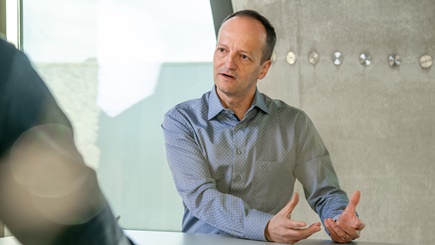
What do you mean by this and how is interdisciplinarity practiced at Empa?
For us, it means approaching a problem from very different angles, which is the only way to recognize the potential for something truly novel. As Empa, with all the natural and engineering sciences under one roof – from nanotechnology and surface analysis, textile and fiber technologies, molecular and cell biology to biomechanics and modeling – we are interdisciplinary by nature, if you wish. On the other hand, modern biomedical technologies are by their very nature systems sciences that combine countless disciplines. You have to understand the entire human system in order to develop effective solutions in the medical sector – from the molecular level to the physiology of the human body, including psychological and sociological aspects as well.
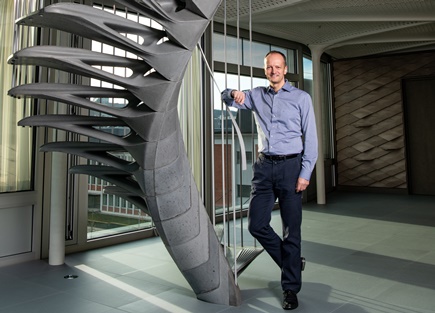
What is a typical Empa product for clinical applications?
One example is “smart” wound dressings. Wound healing processes are extremely complex and take place in different phases; the wound dressing must – ideally – support the different phases in the best possible way, especially when infections are likely to occur. These must be diagnosed and treated at an early stage. Above all, we must prevent a wound from becoming chronic. And later on, the dressing should support and accelerate the healing process.
A related and very topical issue is the worldwide increase in antibiotic resistance. In order to prevent this from spreading any further, we should only ever use antibiotics when they are absolutely necessary – we must therefore detect infections as quickly as possible, for example via sensors, which indicate a bacterial infection by changing the color of the dressing, for example. At the same time, we are working on new, alternative therapeutic approaches, such as “living” materials like bacteriophages – bacteria-killing viruses that are harmless to humans – or probiotics, i.e. “good” bacteria. And we should only “activate” these when the wound is actually infected, for instance by encapsulating them in certain polymers that only release their contents when, say, the pH value in the wound rises, an early indicator of infection. A wound dressing that combines all these different “abilities” would be a prototypical Empa product.
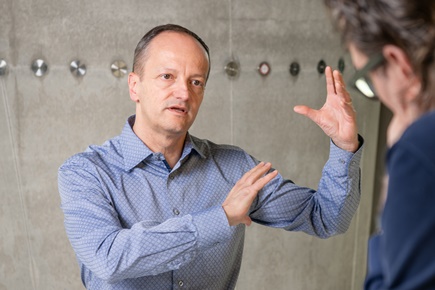
Health is always associated with costs. Where do you see opportunities to get healthcare costs under control?
Primarily in prevention and early detection. Especially in the last years of life, healthcare costs rise sharply. One possible approach would be to use digital twins in combination with wearable sensors to optimally accompany and support older patients. The digital twin could – if necessary – suggest personalized therapies based on the transmitted sensor data.
In addition, various studies have found that up to 50% of all therapies are not applied correctly. If we could improve therapy safety as well as compliance through improved health monitoring – and thus ultimately the success of the therapy –, that would be a step in the right direction.
Looking into the future: What would you like to have achieved with your research in five to ten years' time?
Since 2023, we have launched three booster programs at Empa, for example, for improved cancer treatment, combating antibiotic resistance and one on the field of wound treatment. A wound dressing that could prevent wound infections and, above all, chronic wounds, for example in paraplegics and bedridden people, but also in newborns who are in intensive care for any reason – that would be wonderful.
And in dementia research, to name just another example, it would be a huge step forward if we could detect the first signs of the disease at an early stage with the help of simple diagnostics, for example by analyzing movement patterns, vital parameters such as heart and respiratory rate, body temperature, blood analyses, etc. The earlier we can detect degenerative diseases, the better. Because the earlier we intervene – which is unfortunately not yet possible –, the sooner we could at least slow down the progression of the disease.
Prof. Dr. René Rossi
Materials Meet Life
Phone +41 58 765 7765
Medical technology
Focusing on people: In the Research Focus Area Health, Empa researchers are developing pioneering solutions for the medicine of tomorrow – precisely where “conventional” materials meet living ones, i.e. cells and tissue. There are polymers that light up when there is an infection with certain germs, tiny gold particles against cancer or “nanozymes” that help mothers with complications during pregnancy without harming the foetus – and much more.
Read the latest EmpaQuarterly online or download the PDF version.
-
Share






